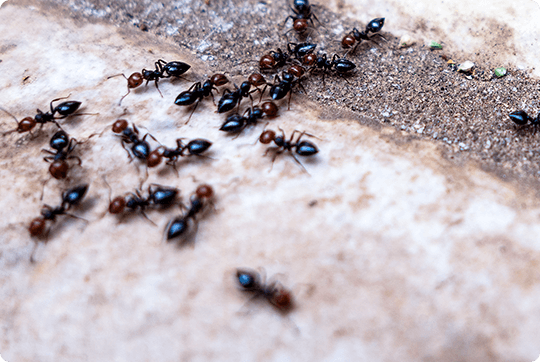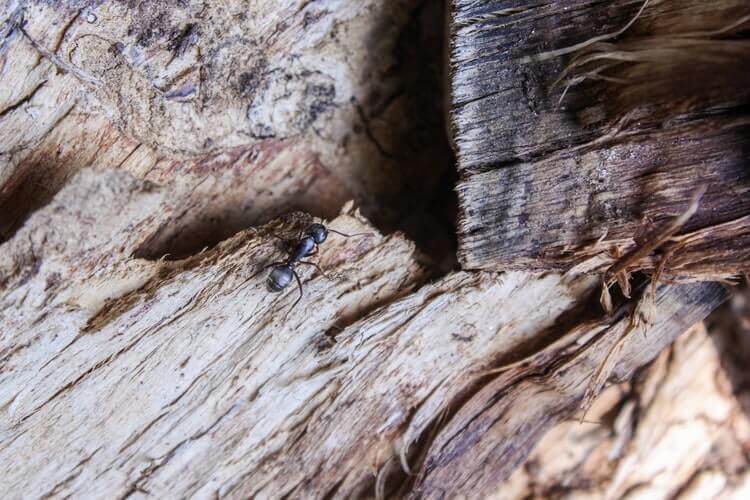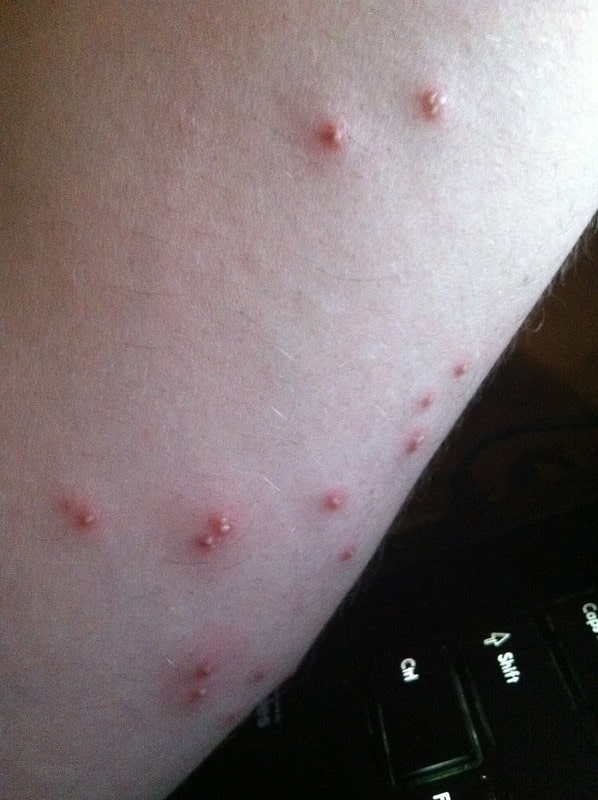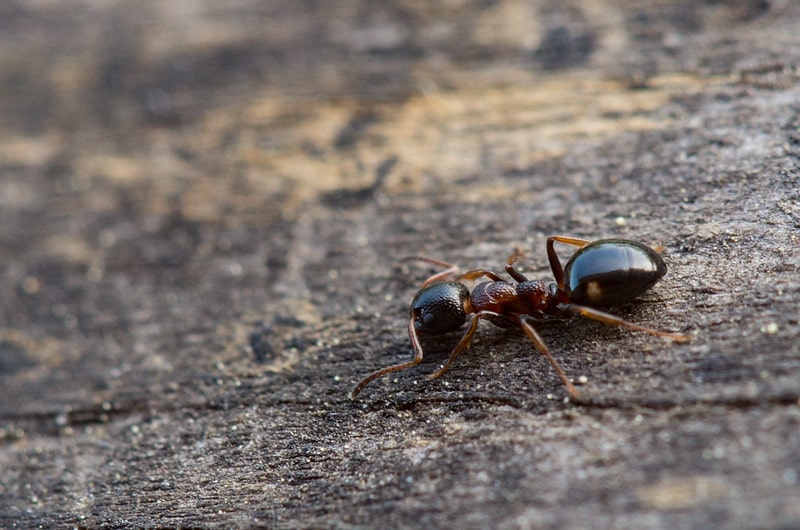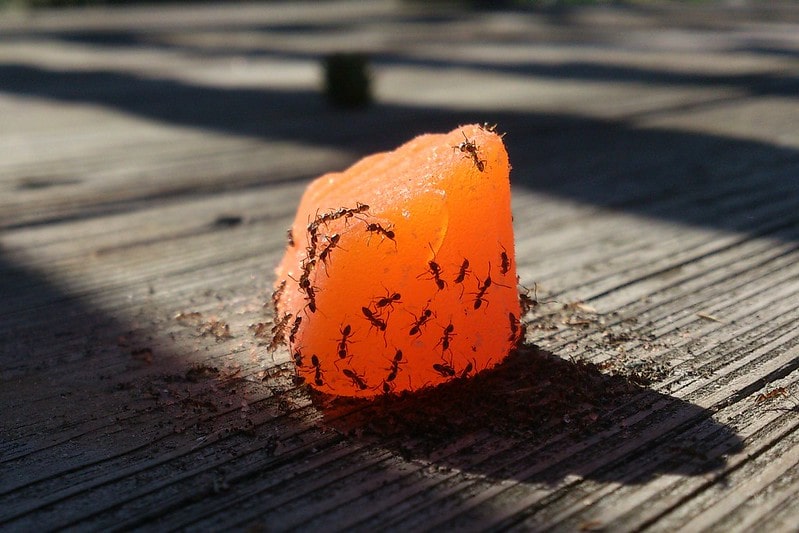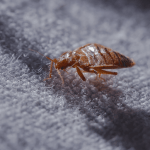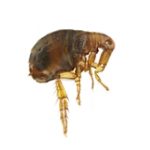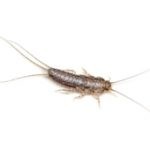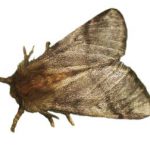Ants Life Cycle

Image by: Forest and Kim Stars / License: CC BY 2.0
With over 50 known species of ants in the UK, they can live in almost every habitat on earth, from forests to our homes. Ant life cycle provides insight into their survival strategies, colony dynamics, and lifespan. If you’re looking to get rid of ants and ant infestation, understanding the ant life cycle is essential.
Ants live in exceptionally well developed and organised communities. They inhabit colonies with very clear hierarchical structures. Ants are extremely codependent for the sake of the survival of their queen and colony.
Ants’ life is dangerous and quite short, which is why they reproduce fast. They have highly evolved social systems. There are different types of ants in the colony, and everyone has a different job to do. Every colony has one queen responsible for founding it and constantly producing new eggs which lead to the growth of the colony. She is the mother of all ant workers who tend to her and expand the colony to the soldiers who defend the nest.
What is the role of the queen in ants life cycle?
The biggest challenge for every ant queen is to find a new colony and give it life. The queen ant plays a central role in the ants’ life cycle, as she is responsible for the reproduction and survival of the colony. Her key functions include:
- Laying eggs – The queen ant continuously lays eggs, ensuring the colony’s population remains stable and grows. Depending on the ant species, she can lay thousands of eggs in her lifetime.
- Starting an ant colony – In many species, a newly mated queen establishes a colony by laying eggs and nurturing the larvae until they develop into worker ants.
- Controlling the colony’s growth – The queen ant produces pheromones that regulate the behaviour and reproductive roles of worker ants, preventing them from laying eggs and maintaining social order.
- Longevity and stability – The queen typically lives much longer than worker ants, often surviving for years or even decades, providing long-term stability to the colony.
- Producing new queens and males – When the colony reaches maturity, the queen lays special ants eggs that develop into new queens and males, allowing for the formation of new colonies.
Without the queen ant, the colony eventually declines, as no new ants are born to replace aging workers. Her role is crucial to the ants’ life cycle and colony survival.
Ant control solutions for homes
You don’t have to be alone in the battle against pests. Hire a professional pest expert!
The stages of the ants colony
An ant colony develops through distinct stages, from its formation to maturity. Each stage plays a crucial role in the growth and survival of the colony.
Every ant colony goes through three stages of development. The first – the founding stage, when the queen mates and creates her own colony. After the first workers are born, the colony goes into the ergonomic stage. During this time, the focus is on the nest expansion, raising more ant workers and conquering new territories. The third stage is the reproductive one. Now the colony is strong and stable.
The queen has reproduced enough workers to guarantee the survival of the colony. She will begin producing virgin queens and males. Once they enter their adult phase, they will leave the nest at the mating season to begin the entire cycle anew. It may take a single season or up to five years before the colony is large enough to enter a reproductive stage.
Each stage of an ant colony’s life cycle is essential for its expansion, sustainability, and continuation of the species.
The four stages of an ant’s life cycle
Ants undergo a complete metamorphosis. Their life cycle is divided into four stages: egg, larva, pupa and adult.
Egg stage
Every ant begins life as a tiny egg, which is soft, oval-shaped, and white. The incubation period varies depending on the ant species and environmental conditions, such as temperature and humidity. In ideal conditions, ants eggs hatch within 7 to 14 days.
The ant eggs have an oval shape and are tiny, about 1 mm long and 0.5 mm in diameter, white and transparent. The only exception is the eggs from which a new queen will develop – they are quite bigger than the rest.
Their surface is smooth and sticky, which in return makes it easy for the eggs to conglutinate. Together they form a mass easily transported by the workers around the nest. Not all eggs have the chance to reach the next phase and undergo metamorphosis. Some of them do not develop and become food for the queen and the larvae.
At the beginning, after laying the first eggs in her new nest, the queen takes care of them. During this time, she uses her stored fat reserves and wing muscles for nourishment. After the first adults emerge, they take over the role of tending to the eggs and larvae.
The queen controls the sex of her offspring. The laid eggs can be differentiated into two groups: fertilised and unfertilised. Due to the nature of these insects, the fertilised eggs hatch female ants – queens, workers, soldiers, whereas unfertilised eggs will hatch male ants.
Once the queen has produced enough eggs and her colony has a stable population, eventually, she will lay eggs that will develop into new queens and males. They will fly off and start new colonies on their own.
Larvae stage
The larvae hatch from the eggs after a period of 7 to 14 days. They too are transparent and have a worm-like form with no eyes and legs. At this stage, the future ants begin feeding with food and juices regurgitated by the adult ants. During this stage, they need a constant supply of food which results in their rapid growth. Future queen ants are fed more than the rest who will become the workers of the colony or male ants.
The larvae undergo periodic moulting, and with each moult, they grow hairs, some of which are hooked. The hooked hair enables them to attach themselves together for easier carrying by worker ants.
Pupa stage
The pupa stage is the transformation phase where the larvae develop into fully formed ants. In some species, pupae are enclosed in silk cocoons, while in others, they are exposed. The duration of this stage varies, generally lasting 10 to 24 days.
Pupas are white, waxy on the outside and gradually become darker. At this stage begins the forming of the ant’s antennae and legs, which are folded against its body. The pupae of some species spin a cocoon for protection, while others remain uncovered, or naked.
There is an exception with some ant species – for example, the Black garden ant, which does not undergo metamorphosis into pupas.
Adult stage
Once fully developed, ants emerge as adults and assume different colony roles. The colony consists of three castes:
- Queen ants – The only fertile females, responsible for reproduction. Queen ants can live for several decades in certain species.
- Worker ants – Sterile females that maintain the colony, forage for food, and care for larvae. Their lifespan ranges from a few weeks to several months.
- Soldier ants – Specialised defenders that protect the colony. Their lifespan is similar to worker ants but varies across species.
The entire cycle, from the queen laying the eggs to the final stage of a fully developed adult ant, may last from 6 to 10 weeks. The baby ants that come out of the pupas are very pale, soft and weak. However, they need only a couple of hours for their exoskeletons to harden and for them to get stronger and change their appearance by getting darker. Depending on the species, ants can be black, red or brown.
The adult ants have six legs, and a body that is segmented into three parts: the head, thorax, and abdomen. On their heads, they have mouthparts which they use for eating and excavating, as well as two antennae which are sensory organs. Antennae are essential for the ants’ sense of smell and touch. Worker ants use their sense of smell to lead other ants to sources of food, to recognise friends or enemies, and to establish territorial boundaries.
Ants hierarchy and castes
- Queen ants – Some queens may live up to 15 years, even decades, with the right conditions. Initially, every queen has wings to fly away in pursuit of males to mate. A queen may copulate with several males during her brief mating period, however, she never mates again. She stores sperm in an internal pouch located near the tip of her abdomen. There the sperm remains immobile until she opens a valve that allows it to enter her reproductive tract to fertilise the eggs. Once the queen settles to lay her eggs and form a new colony, she will tear off her wings. She uses them only once for her first and only flight. For the rest of her life, she will stay in her nest laying eggs. The workers will tend to all her needs. The queen is the most important ant in the colony. She is the mother of all ants, the source of life and future in every colony. If the queen dies the colony will come to an end. There will be no new eggs to replace the dying ants.
- Reproductive male ants – The male ants have wings and their only purpose, once they have reached adulthood, is to fly away and mate with queens. They live only a couple of weeks. These ants are the same size or a bit bigger than the worker ants and have small heads with large eyes. Once they have mated they die. The male ants have no other responsibilities in the colony.
- Worker ants – Worker ants have no wings and typically survive several months with some exceptions of workers who can live up to seven years. They can not reproduce. The responsibilities of the female worker ants may change with age and different groups specialise in different activities. Usually, the young workers are closer to the queen, tending to her and the eggs, feeding the larvae. The other workers are busy with building and expanding the nest, gathering food and making sure the queen is always taken care of and safe. The most important task for the workers is to control the nutrition of the larvae all the time. Depending on how much they feed them determines the kind of ant they will become. For example, if the colony comes under attack, the workers will ensure that more larvae become soldiers. If they notice a deficiency of food, the workers will feed more larvae to grow into workers and help with gathering more food.
How long do ants live for?
The lifespan of ants varies significantly based on species and caste.
| Ant Type | Lifespan |
|---|---|
| Queen Ants | 10 to 30 years |
| Worker Ants | A few weeks to several months |
| Soldier Ants | Several months to a year |
| Male Ants (Drones) | A few days to a few weeks |
In conclusion
The life cycle of an ant is an incredible process, with each stage playing a crucial role in colony survival. From egg to adult, ants demonstrate remarkable resilience and adaptability. Understanding how long ants live for, their roles, and lifespan variations across species provides valuable insights into one of nature’s most organised insect societies.
Because their species is very vulnerable, they propagate in large numbers. A queen has to lay so many eggs at a time because the period it takes for an egg to become a fully developed working ant is quite long and at the same time, the regular worker ant lifespan is quite short. The queen has to compensate for any loss of life and guarantee a stable population that will expand her colony and sustain the life within it.
Note that we only aim to provide some useful information about how to identify ants in each stage of their life.



